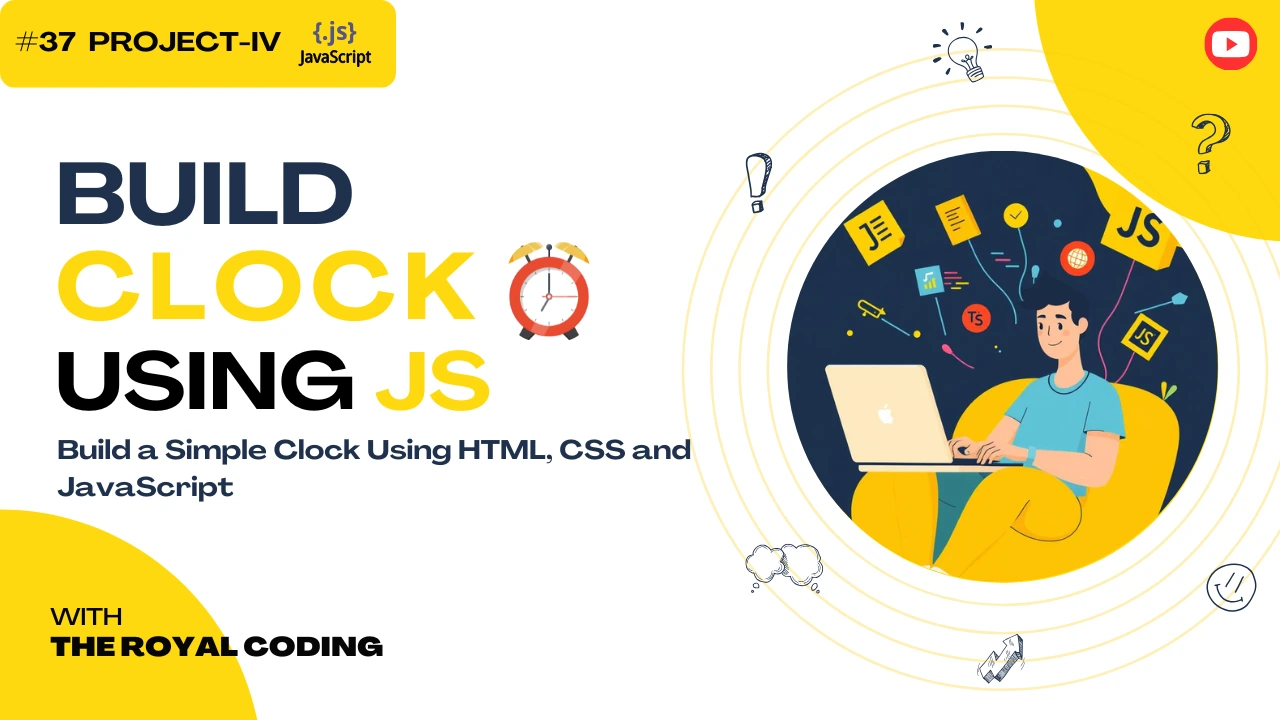
Build a Simple Clock Using JavaScript
The clock will display the current time in 12-hour format. The clock will update every second. The clock will display AM/PM. The clock will display the date. The clock will display the time in seconds, minutes and hours.
What You’ll Learn
How to use setInterval for real-time updates
How to work with the Date object in JavaScript
How to manipulate the DOM dynamically
Final Output
Your clock will look like this (styling may vary):
Step 1: HTML Structure
<!DOCTYPE html>
<html lang="en">
<head>
<meta charset="UTF-8">
<title>Digital Clock</title>
<style>
body {
display: flex;
justify-content: center;
align-items: center;
height: 100vh;
font-family: 'Arial', sans-serif;
background-color: #121212;
color: #ffffff;
}
#clock {
font-size: 60px;
background: #1e1e1e;
padding: 30px 60px;
border-radius: 15px;
box-shadow: 0 0 15px rgba(255, 255, 255, 0.1);
}
</style>
</head>
<body>
<div id="clock">--:--:-- --</div>
<script src="clock.js"></script>
</body>
</html>
Step 2: JavaScript Logic
function updateClock() {
const now = new Date();
let hours = now.getHours();
const minutes = now.getMinutes();
const seconds = now.getSeconds();
const ampm = hours >= 12 ? 'PM' : 'AM';
hours = hours % 12 || 12; // Convert 0 to 12 for 12-hour format
// Pad minutes and seconds with leading zeros if needed
const formattedTime =
`${String(hours).padStart(2, '0')}:${String(minutes).padStart(2, '0')}:${String(seconds).padStart(2, '0')} ${ampm}`;
document.getElementById('clock').textContent = formattedTime;
}
// Initial call
updateClock();
// Update every second
setInterval(updateClock, 1000);
Explanation:
new Date(): Gets the current time.
getHours(), getMinutes(), getSeconds(): Extracts parts of the time.
% 12 || 12: Converts 24-hour format to 12-hour and handles 0 as 12.
padStart(2, '0'): Ensures time units have two digits.
setInterval(updateClock, 1000): Runs the clock update every second.
Note:- You can try this out in a browser or tools like JSFiddle, CodePen, or your own index.html.